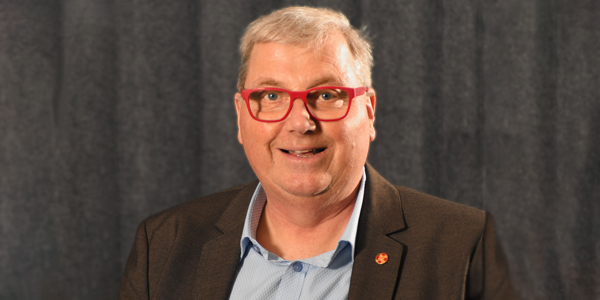Diversity and the arc of influence
Boards need to more closely reflect the makeup of Aotearoa, Pasifika event hears.

Becoming an Officer of the New Zealand Order of Merit (ONZM) in the 2023 New Year Honours for his services to disabled people was a moment that Grant Cleland (MInstD) will never forget. Informed of the news before the public announcement, he had given a letter to his 91-year-old mum, which she wasn’t to open until the 31st of December.
That day, Cleland called her.
“So she opened the envelope and actually dropped the phone,” says Cleland.
Cleland describes receiving the ONZM as “very affirming” and as much about recognition of everyone who has supported him throughout his life – and his 30 years of working in the health, disability and education sectors - as it was about him.
“I couldn't have done those things without the support of the wonderful things that my mum and dad did in terms of supporting me growing up. And then, my family. It’s also recognition for all the people that I've worked with along the way – you don't do it alone, you’re working with lots of people who get things across the line,” Cleland says.
His governance roles include the New Zealand Qualifications Authority, workforce development council Toitu Te Waiora, and the SkillWise Trust - a Christchurch services provider for people with learning disabilities.
As his day job, he manages Creative Solutions where he provides strategic advice on disability-related issues to state and NGO organisations on topics such as governance, leadership, social change, project management, planning and training.
Born with Spina bifida, Cleland has used a wheelchair for mobility since childhood and is a strong advocate of the value disabled people can offer in the workplace.
“I do this work because I want to make a difference and I think that's really important,” he says.
According to Cleland, 24 percent of our population have an impairment and he believes boards need to acknowledge the potential loss of a customer base if they don’t factor this into their strategy, including ensuring their infrastructure is accessible.
“By cracking open that door and really thinking about how they are meeting the needs of people, it may actually really be good for your business,” he says.
Cleland is seeing an increase in businesses and organisations identifying this as an important issue, but says it isn’t happening across the board.
Through his involvement with directors on large listed company boards, Cleland has realised that most rarely or ‘never’ have conversations about disability.
“There are some organisations who are starting to grapple with this. But there are many who are not even starting their journey, not even really thinking about it.”
Cleland says people are often surprised by the statistics in terms of the portion of our population with impairments but reinforces that “people don’t know what they don’t know” and believes education is necessary for change.
“I think at the board level, the key is to set some strategic outcomes and that the organisation is serious about its strategy for engaging with the disability community.”
He says there also need to be conversations at the board and executive level about how to implement a strategy, once it is devised. That process means asking the hard questions, including finding out what barriers disabled staff face within that organisation, and what the customer base experiences.
“Boards need to ask, what are some of the solutions and what is the opportunity for us in tapping into the disability community?”
As a member of the NZQA board, Cleland says discussions around equity and disabled ākonga (students) are a regular occurrence, and as a result, they have recently developed a disability action plan.
Around 15 percent of people also have some form of neurodiversity, which includes learning disability, ADHD, or autism. Cleland says those with mental illness, neurodiversity and other hidden or obvious impairments can face a lot of unconscious bias where their skills are undervalued, or services are inaccessible because the design hasn’t considered their needs.
Another key area for boards to consider is data.
“What data do they have about their customer base that have some sort of impairment? What do their disabled staff require to reach their potential? And if they haven't got much data, how do they improve it?”
Cleland understands the obstacles that those from the disability community face on a daily basis, having come up against them both in education and employment.
“We use this term ‘disabled people’ now because we're trying to make the point that disabled people are often disabled by their environment.
“People assumed that I was struggling at school because of my impairment, which is just absolutely not true. I was struggling because I was just spending a whole lot of time away for operations - and there was no solution to help me catch up.”
When it came to finding employment, Cleland was offered an internship through a programme called Mainstream. Once he got there, people quickly became aware of his ability and skill-set, which led to other opportunities.
Having served as the CEO for Workbridge for nearly decade, Cleland worked with employers to assist disabled people into employment. The organisation worked with upwards of 1,800 employers per year in 22 locations around the country.
As for boards and businesses, Cleland says there are many benefits to employing disabled people and having them on boards. This includes a positive impact on company culture, improving outcomes and engagement with the disability community.
“Like me, there are many disabled people with generic and specialist skills and experiences who can add value as a staff or board member.”
With a visible shift of organisations growing their diversity and inclusion strategies for Māori and Pacific communities, Cleland believes meeting the needs of the disabled community is next in line, “because it's a big portion of our community and potential customers.”